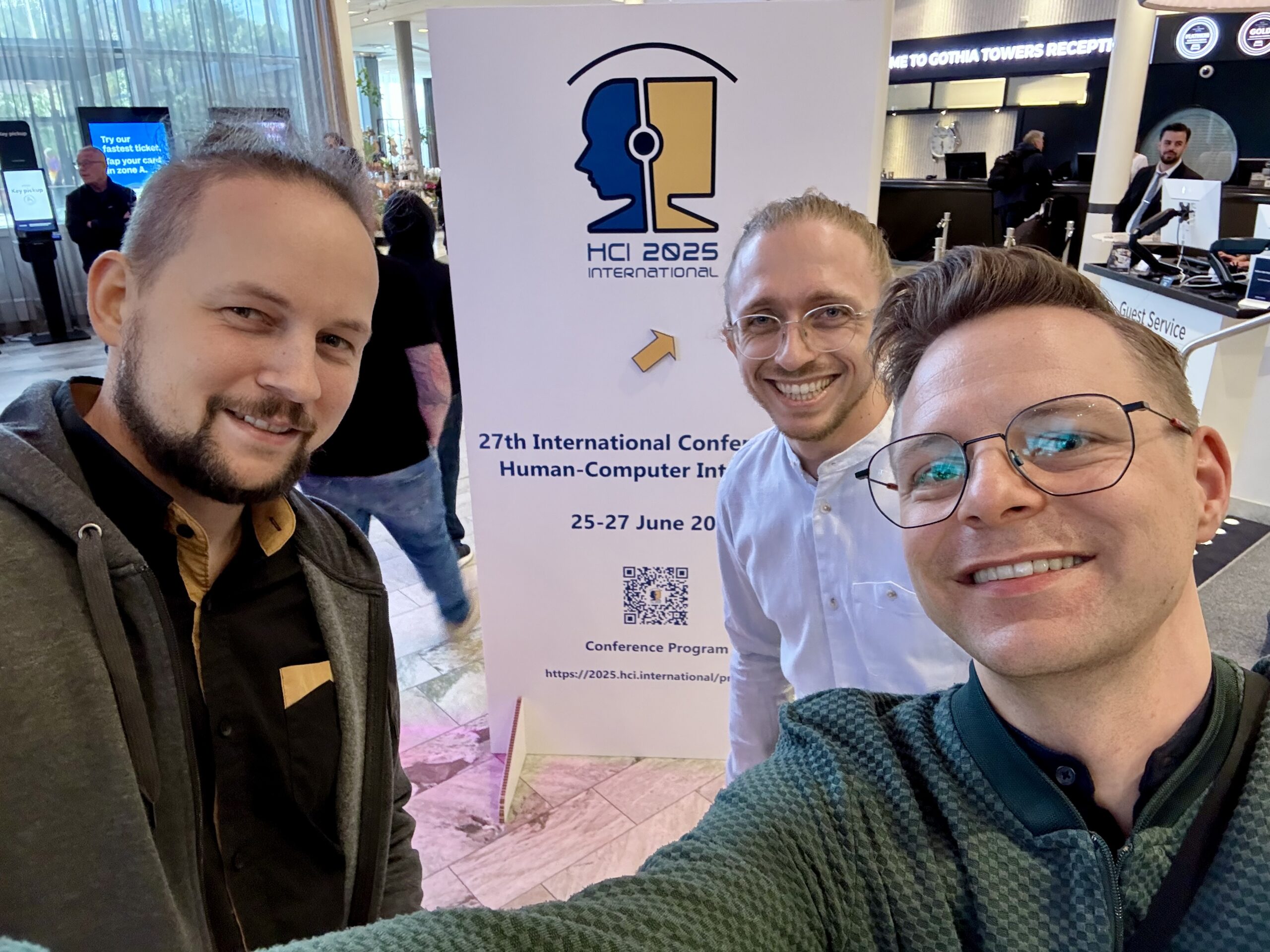
The HCI International 2025 conference, held from June 22 to June 27 in Gothemburg, Sweden, is a prestigious international event that brings together researchers, practitioners, and academics from the field of Human-Computer Interaction (HCI). The conference covers a wide array of topics, including user experience design, cognitive ergonomics and accessibility, as well as emerging technologies, making it a perfect platform for the AutARK project. Our research focuses on developing assistive technologies tailored to the needs of autistic individuals, aligning seamlessly with the conference’s theme of enhancing human-computer interaction to improve everyday experiences.
Participating in the HCI International 2025 provided us with an invaluable opportunity to present our work and engage in meaningful exchanges with other conference attendees. These interactions are crucial, as they allow us to gather diverse perspectives, receive constructive feedback, and explore potential collaborations. Sharing our research with an international audience not only helps to refine our approaches but also highlights the importance of developing inclusive technologies that cater to diverse user needs. The insights gained from these discussions are instrumental in driving innovation and ensuring that our solutions are both effective and user-centered.
Presented Full Papers
Personas of Autistic Office Workers: A Foundation for Developing Effective Assistive Technologies
Christin Engel, David Gollasch, Meinhardt Branig, Jan Schmalfuss-Schwarz, Gerhard Weber
View paper in SpringerLink
Abstract. Autistic employees frequently face significant challenges in social interaction, communication, time and task management, and sensory perception. Assistive technologies (AT) and tailored customization can help overcome these barriers and improve workplace conditions for autistic individuals. However, the effective design of AT requires an in-depth understanding of the heterogeneous needs and independent influencing factors of this population. This paper presents a framework to support the development of authentic personas, which serve as a foundation for designing AT that meets the specific needs of autistic employees. We conducted a comprehensive context analysis by observing real training scenarios in a vocational training center and supplemented these observations with in-depth interviews with autistic individuals and diverse stakeholders. Drawing on these data and guided by the International Classification of Functioning, Disability and Health (ICF), we defined meaningful personal and environmental attributes that underpin our persona development. The resulting five realistic personas capture a wide range of traits and challenges that critically impact the work experience of autistic employees in office environments. This approach balances the diversity of the target group while providing actionable insights into their support needs. Finally, the paper discusses the limitations and potentials of using personas in the design of AT.
Automated Task Extraction from Emails: Aiding Autistic Individuals in the Workplace
David Gollasch, Meinhardt Branig, Hagen Dähne, Gerhard Weber
View paper in SpringerLink
Abstract. The development of assistive technologies for autistic persons, particularly in the realm of email communication, is a burgeoning field that intersects multiple domains including human-computer interaction, natural language processing, and cognitive psychology. This research seeks to address this gap by developing an innovative assistive technology that leverages Natural Language Processing (NLP) techniques and Large Language Models (LLMs). The primary objective of this study is to create a tool that automatically extracts tasks and deadlines from emails, presenting them in a clear and user-friendly format. The proposed system aims to reduce cognitive load and improve task management for both autistic and neurotypical employees. The system was evaluated through a user study, demonstrating significant improvements in task comprehension and management efficiency. This study demonstrates the potential of NLP and LLM-based technologies to improve accessibility in professional communication. The insights gained from this study offer a strong foundation for future advancements in assistive email processing technologies.
Bridging Communication Gaps: Conceptual Enhancements for Video Conferencing with Autistic Users
Jacques-Maurice Walther, Jan Schmalfuss-Schwarz, David Gollasch, Christin Engel, Gerhard Weber
View paper in SpringerLink
Abstract. This study investigates how video conferencing systems can be improved to better support autistic individuals, who often struggle with speaker recognition, social cues, and sensory overload. These challenges can lead to misunderstandings and anxiety, limiting professional and social participation. To address these issues, we designed and evaluated video conferencing enhancements, including speaker identification, irony detection, and meeting agendas. Following a literature review and persona-based needs analysis, we developed nine low-fidelity prototypes in an iterative, user-centred process. Based on user feedback, including input from autistic individuals, we refined these into a high-fidelity prototype incorporating speaker highlighting and participant information boxes. Our results indicate improved usability and reduced disruption, though further customization is needed to accommodate individual needs. Both autistic and neurotypical users can benefit from the prototypically implemented features, indicating the potential for broader use.